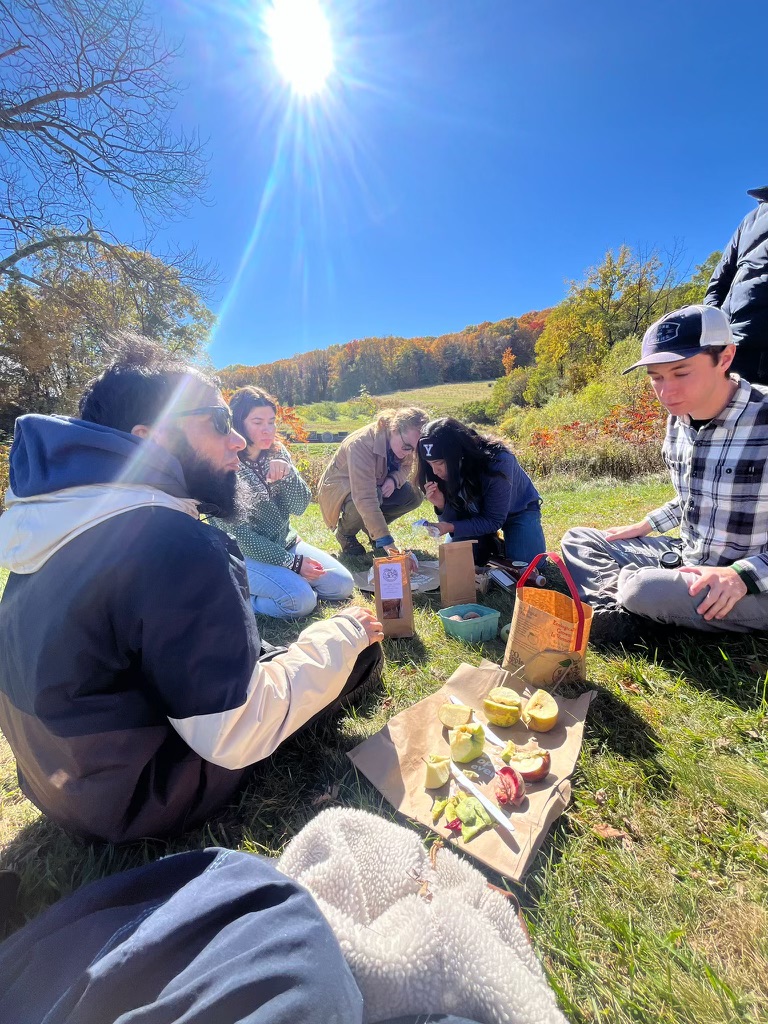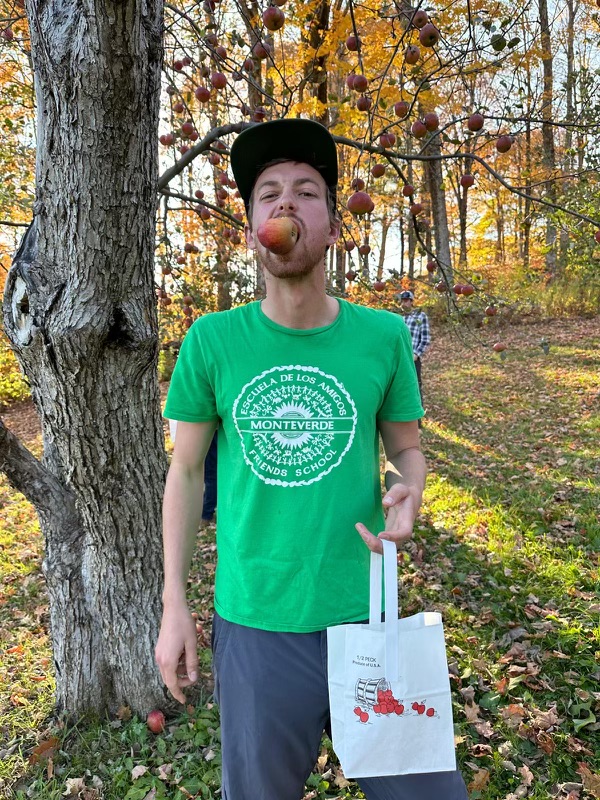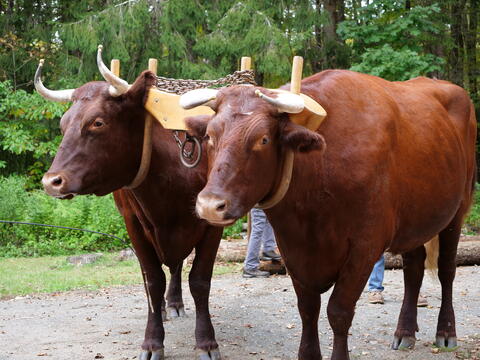
By: Mia Ambroiggio ‘26 MEM
Hailing from a small island off the coast of Washington State, Cayce Morrison ‘26 MEM was eager for an opportunity to be immersed in the forests of the region he now calls home. So when he snagged a spot on the Fall Forestry Field trip, he was thrilled to get better acquainted with New England’s forests and the communities and commerce that depend on them. Morrison and his classmates embarked on a four-day trip—visiting both public and private forests and meeting with land stewards and practitioners—to learn about forest management on working lands and how conservation and sustainable resource use fit into producing timber and non-timber forest products. This field trip provided an opportunity to expand students’ place-based learning beyond Yale-Myers Forest and explore forest management practices in the broader Northeast region. The itinerary included plentiful stops throughout Vermont, in the traditional territories of the N’dakina, Wabanaki, Mohican, and Pennacook Tribes.
The trip focused on reading the forest landscape, a term commonly used at The Forest School. Students spent most of the trip observing forests and piecing together the historic use of the land, as Morrison reflects. He found it particularly enriching to learn about forest landscapes as he was walking through them.
“We were learning from people who all saw different things in these landscapes,” he said. “Throughout our forest walks we would pause and someone would talk about the land—the elevation, the species we were seeing, and any indicators of past land usage.” Describing and discussing the social history of a forest and how land use history impacts the forest landscape is crucial in understanding how to best conserve and manage these places in the future.

Gathered in the woods, students learn about forest management practices at Smokey House Center in Danby, VT. Photo Credit: Nate McMullen
Observing forest dynamics—and how humans interact with forested landscapes—is not new to Morrison. Being raised a Quaker, he was taught the term to hold in the light, to offer support and warmth, and to sit with and acknowledge that which is different from you. “The terms have never been explicitly explained to me,” Morrison laughs, “but [those terms] have helped me understand my own being and interests. There’s a big emphasis on listening in Quakerism.” Which, to Morrison, expands beyond the human dimension. “To me it relates to stewardship and considering the environment, and it helps me appreciate the complexity of nature.”
Morrison shared that growing up, his father symbolically baptized him in a mountain lake his family would visit every summer. His grandmother referred to these mountains—where she grew up going as well—as alive and part of the family, too. “Whenever we would go there, my grandmother would say ‘we’re going to go visit our ancestors,’ so I always grew up with a consideration for the natural world that was beyond a utilitarian view of it.”
The fall forestry field trip energized Morrison to keep discovering ways he can think about and relate to the natural world that are not through a singular lens. The different ways to practice forest management, paired with the different interpretations of conserving land from different stakeholders, showed him that a culmination of various perspectives is vital to being a good steward of natural spaces.

Students share an autumnal lunch at Scott Farm Orchard in Dummerston, VT. Photo credit: Airi Gavan
Collaboration at the Forefront
Morrison’s favorite part of the trip was seeing the different ways people perceived Vermont’s landscape. “A highlight for me was observing the great conversations about opportunities and barriers to collaboration and conservation efforts on working land,” he said. “It was so cool to be in a space where educators, working professionals, and the people working with the land everyday were talking about how to solve these issues, and we got to be a part of those conversations.” The nature of how forests were managed, and what they were managed for, was collaborative as well. Despite the scale or nature of the operation, conservation efforts are woven into the practices of the timber operations the students observed.
Morrison found it particularly exciting to see alumni doing this work. The cohort visited Long View Forestry in Hartland to observe a timber harvest, which was led by Alex Barrett ‘12 MF and his colleagues. Later in the trip, Amelia Napper ’24 MF of the Ruffed Grouse Society taught the students about conservation practices on state-owned lands. The Ruffed Grouse Society is aiming to restore a mosaic of forest age classes, including managing for early successional habitat, which species like the ruffed grouse depend on.
In addition to the collaboration among stakeholders Morrison witnessed firsthand, as one of the two first-year students on the trip, he also appreciated the opportunity to connect with and learn from second year students at the Yale School of the Environment. Whether it was coming together over shared meals—such as Friday night’s dinner which took place in an old barn, where everyone sat at one long table, sharing plates and reflecting on their experiences—or during a stop at an heirloom apple orchard where they played baseball with rotting apples, the Fall Forestry Field trip provided time to intentionally connect with those Morrison will be working and learning alongside for the years to come.

Cayce Morrison enjoys an heirloom apple at Whitman Brook Orchard in Quechee, VT. Photo Credit: Isabela Valencia




